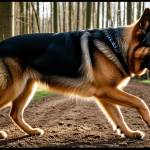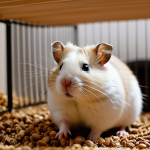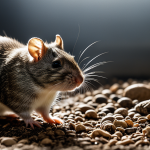Understanding Brachycephalic Pug Anatomy and Its Impact on Health
Brachycephalic pug anatomy is characterized by a shortened skull and flat face. This unique structure results in a compact muzzle, which unfortunately leads to pug health issues commonly associated with respiratory function. The compressed airway passages increase the risk of breathing difficulties, a hallmark concern in brachycephalic dog care.
One of the most significant challenges is restricted airflow caused by narrowed nostrils, elongated soft palate, and sometimes a hypoplastic trachea. These anatomical traits contribute to a higher likelihood of respiratory distress and snoring. Recognizing early signs—such as labored breathing, frequent coughing, or excessive panting—is crucial for timely intervention.
A découvrir également : Ultimate Strategies for Enhancing Your German Shepherd’s Hind Leg Power
Owners should prioritize routine monitoring of their pug’s respiratory health. Regular veterinary visits help detect evolving problems before they worsen. Preventive measures include maintaining ideal weight and avoiding environmental stressors like extreme heat. Understanding brachycephalic pug anatomy empowers caregivers to anticipate pug health issues and to apply appropriate brachycephalic dog care strategies that enhance quality of life.
Identifying and Managing Respiratory Challenges in Pugs
Respiratory distress in pugs often presents through pug breathing problems such as noisy breathing, persistent coughing, excessive panting, or episodes of gasping for air. These signs are red flags indicating escalating respiratory issues that need cautious attention. Early detection is vital; for example, labored breathing after minor activity warrants closer observation and possibly veterinary evaluation.
A lire également : Ultimate Handbook: Achieving Therapy Dog Certification for Your Bullmastiff
Effective pug respiratory care involves controlling environmental triggers like heat and humidity as these exacerbate breathing difficulties. Maintaining an optimal weight reduces pressure on the airways, easing airflow and lowering the risk of severe respiratory distress. Limiting strenuous exercise, especially in hot weather, is a cornerstone of managing potential breathing complications.
Situations requiring immediate veterinary attention include collapse, blue-tinged gums, or severe difficulty breathing. Prompt intervention can prevent life-threatening outcomes in brachycephalic breeds like pugs. Caregivers should keep emergency contact details handy and monitor respiratory rates during rest to spot irregularities early.
In short, recognizing symptoms and implementing daily management strategies are essential components of optimal pug respiratory care that improve comfort and longevity for these charming companions.
Best Practices for Skin, Eye, and Ear Care in Pugs
Pugs require specialized attention to maintain pug skin care, pug eye health, and ear hygiene due to their unique facial anatomy. Their skin folds can trap moisture and debris, leading to infections such as pyoderma. Regular cleaning of these folds with gentle, vet-recommended wipes helps prevent bacteria buildup. Monitoring for redness, swelling, or foul odor is essential to catch infections early.
Pug eye health demands frequent inspection because their prominent eyes are prone to dryness, irritation, and injury. Using lubricating eye drops prescribed by a veterinarian maintains moisture levels and prevents ulcerations. Avoiding exposure to dust and sharp objects reduces the risk of eye trauma.
Ear cleaning in pugs is critical to avoid wax buildup and otitis externa. Using a vet-approved cleaner, owners should gently clean the ears weekly, ensuring they are dry afterward. Signs of infection include shaking the head, itching, or discharge.
Consistent implementation of these care routines improves comfort and reduces the likelihood of chronic issues. Early detection and treatment strategies within brachycephalic dog care frameworks help safeguard pugs’ overall well-being, making skin, eye, and ear care a vital aspect of responsible pug ownership.
Diet and Nutrition to Support Pug Health
Maintaining a balanced pug diet is crucial to mitigate pug health issues linked to brachycephalic pug anatomy. Proper nutrition for brachycephalic dogs supports respiratory function and overall well-being. Overweight pugs face increased pressure on already compromised airways, worsening pug breathing problems and respiratory distress. Therefore, weight management in pugs is a primary focus to alleviate breathing difficulties.
Recommended diets emphasize high-quality proteins, moderate fats, and limited carbohydrates to prevent excessive weight gain. Feeding controlled portions avoids obesity, which can exacerbate respiratory distress in dogs with brachycephalic features. Including foods rich in antioxidants and omega fatty acids can support skin and joint health as an added benefit.
Hydration also plays a vital role; ensuring pugs have constant access to fresh water helps maintain mucous membrane moisture, easing breathing challenges. Feeding routines should align with activity levels, providing smaller, frequent meals to avoid discomfort that could impair respiration.
In summary, adopting targeted dietary strategies tailored to the needs of brachycephalic pugs contributes significantly to enhancing pug respiratory care and reducing health complications associated with their unique anatomy.
Exercise, Enrichment, and Safe Activity Level
Exercise for pugs must be carefully balanced to support pug exercise needs while considering their vulnerable respiratory system. Due to brachycephalic dog enrichment requirements, activities should be low-impact and spaced out to prevent triggering pug breathing problems. Short, frequent walks offer cardiovascular benefits without causing undue strain. Owners should monitor for signs of overexertion, such as excessive panting, wheezing, or lethargy, to avoid respiratory distress in dogs.
Indoor enrichment options include puzzle toys and gentle play that stimulate the mind without taxing breathing capacity. Incorporating rest periods between activities helps maintain comfort and safety. Avoiding exercise during hot or humid weather is imperative because heat exacerbates respiratory distress in dogs with brachycephalic anatomy.
Guidelines to recognize physical overexertion focus on watching for persistent coughing, difficulty breathing, or collapsing. Immediate cessation of activity and cooling measures become necessary if these symptoms appear. Using air-conditioned environments and shaded areas during exercise supports oxygen intake and reduces risk. Overall, adapting pug exercise routines to their unique physiology improves wellbeing and prevents avoidable health issues linked to their anatomical challenges.
Grooming Strategies and Maintenance Checklists
Maintaining a consistent pug grooming routine is essential to managing the unique needs of brachycephalic pugs. Daily care should include gentle cleaning of facial folds to prevent irritation and infection. Ignoring these folds can lead to severe skin conditions due to trapped moisture and bacteria. Additionally, wiping the eyes helps remove discharge that could cause discomfort or infection, supporting overall pug eye health.
Weekly grooming involves thorough yet delicate brushing to remove loose hair and reduce skin issues. Bathing should be done with vet-approved shampoos designed for sensitive skin, avoiding harsh chemicals. Regular nail trimming prevents discomfort and mobility problems.
A practical maintenance checklist includes:
- Daily fold and facial cleaning
- Weekly brushing and ear cleaning with vet-recommended solutions
- Regular nail trimming and occasional baths
- Monitoring for signs of skin redness, eye irritation, or ear infections
Following these steps as part of structured brachycephalic dog care prevents common pug health issues linked to their anatomy. Owners equipped with a grooming checklist are better prepared to ensure their pug’s comfort and wellbeing, fostering a proactive rather than reactive approach to health management.
Preventative Veterinary Care and Home Monitoring
Routine vet visits for brachycephalic dogs are crucial in addressing common pug health issues before they escalate. Regular checkups allow veterinarians to assess respiratory function, skin condition, and weight—key areas affected by brachycephalic pug anatomy. Vaccinations tailored for pugs protect against infectious diseases, bolstering overall health.
Home health monitoring complements professional care by enabling early detection of problems. Owners should track respiratory rate at rest, watching for rapid or labored breathing, which signals worsening pug breathing problems. Noticing changes in behavior, appetite, or energy levels further helps in timely intervention. Consistent observation supports effective pug respiratory care by catching subtle signs of respiratory distress in dogs early.
Specialized veterinary services experienced with brachycephalic breeds offer targeted strategies, including airway assessments and surgical options when necessary. Owners should maintain a health diary and report abnormalities promptly during visits. This proactive approach enhances brachycephalic dog care, reducing emergency scenarios through prevention and early management.










